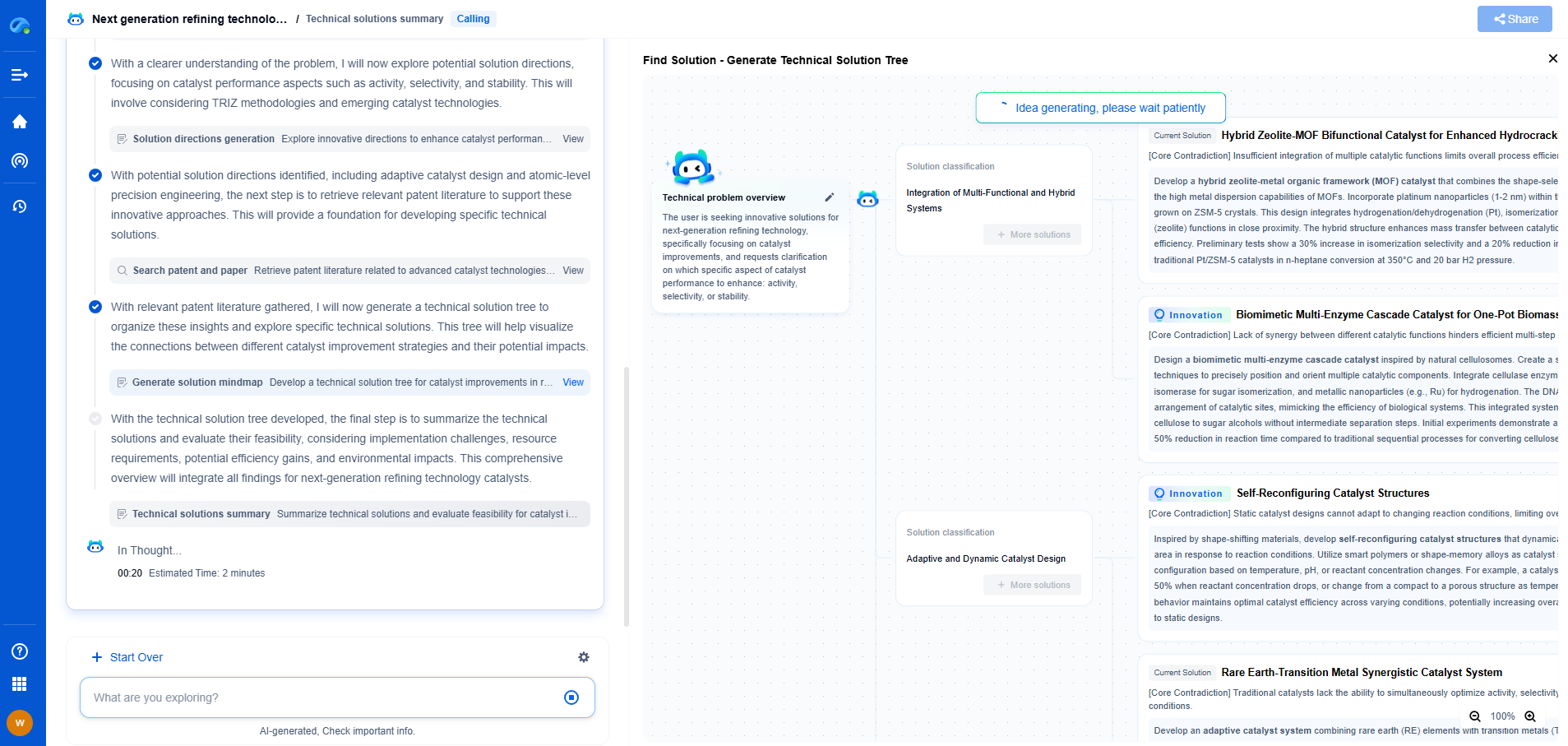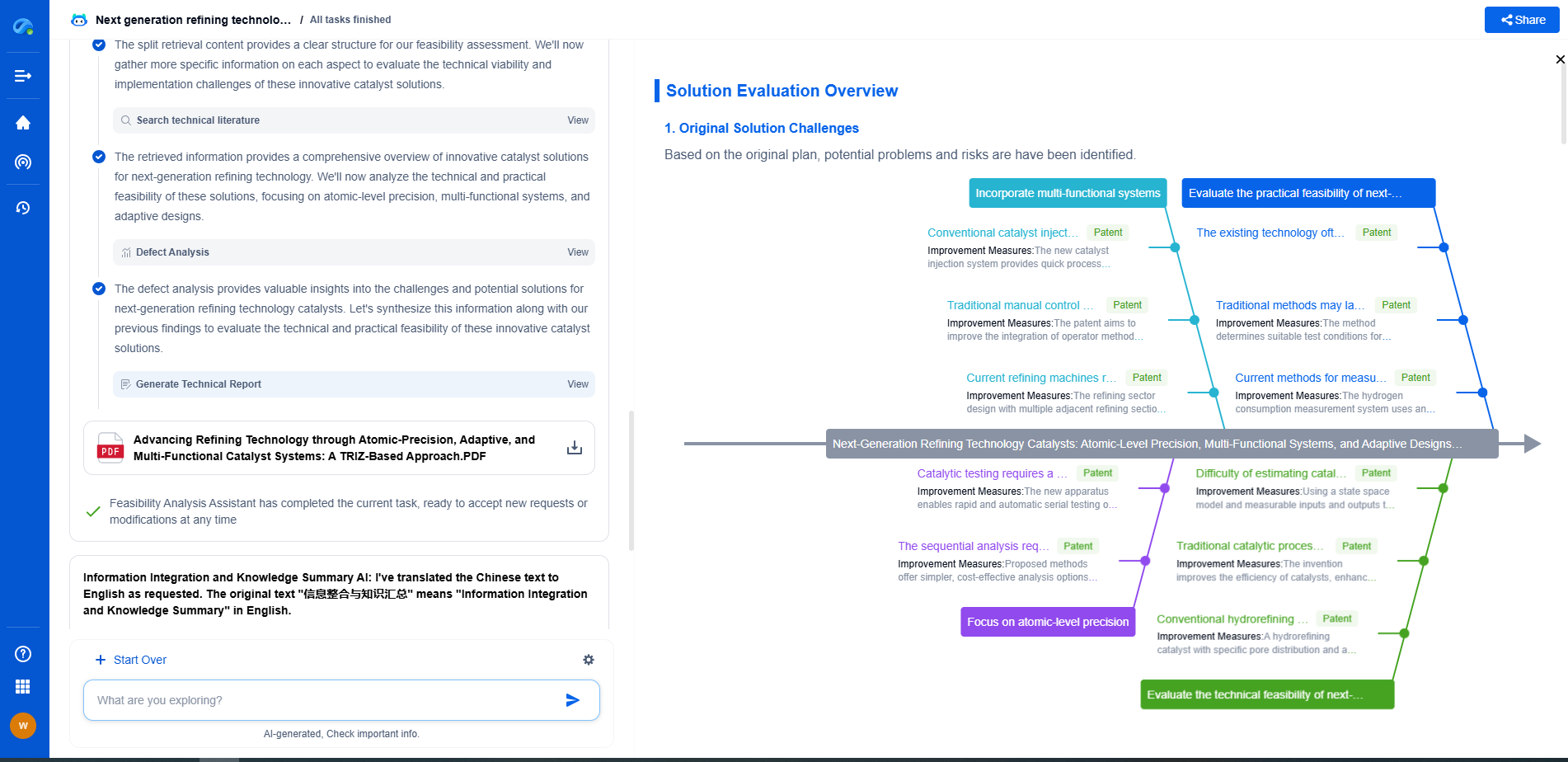What Is a Phase Rotation Tester and Why Is It Critical in 3-Phase Systems?
JUL 9, 2025 |
Phase rotation, also known as phase sequence, is a critical concept in three-phase electrical systems. These systems are commonly used in industrial and commercial settings due to their efficiency in transmitting electrical power. In a three-phase system, three alternating currents of the same frequency and amplitude are offset in phase by 120 degrees. The sequence in which these currents reach their maximum value is referred to as the phase rotation.
Phase rotation can be either clockwise (ABC) or counterclockwise (CBA). The correct phase rotation is vital for the proper functioning of three-phase equipment such as motors, pumps, and transformers. Incorrect phase rotation can lead to equipment running backward, reduced efficiency, increased wear and tear, or even complete failure.
What Is a Phase Rotation Tester?
A phase rotation tester is a tool designed to measure and identify the phase sequence of a three-phase power supply. This handheld device is crucial for electricians and technicians working with three-phase systems to ensure that the electrical installations are connected with the correct phase rotation.
The phase rotation tester typically features three alligator clips or probes that connect to each of the three phases of the system. Once connected, the tester displays the phase sequence, indicating whether the rotation is clockwise or counterclockwise. Some advanced models may even include additional features such as voltage measurement and continuity testing.
Why Is a Phase Rotation Tester Critical?
1. Ensuring Proper Equipment Operation
The primary reason for using a phase rotation tester is to guarantee that three-phase equipment operates correctly. Many industrial machines rely on the correct phase sequence to function as intended. Motors, for example, will rotate in the wrong direction if the phase rotation is incorrect, which can cause significant disruptions in operations and potentially damage the machinery.
2. Preventing Equipment Damage
Incorrect phase rotation can lead to mechanical stress and overheating in motors and other equipment. This can result in premature wear and tear, reducing the lifespan of expensive machinery and increasing maintenance costs. By verifying the phase rotation before starting equipment, technicians can prevent such damage and ensure the longevity of the systems they work with.
3. Enhancing Safety
Safety is a paramount concern in any electrical installation. Incorrect phase rotation can create hazardous conditions, such as equipment malfunctions that may lead to accidents or electrical fires. Using a phase rotation tester helps in identifying and rectifying phase sequence issues before they escalate into dangerous situations, thereby maintaining a safe working environment.
4. Compliance with Industry Standards
Many industries have strict regulations and standards regarding electrical installations. Ensuring the correct phase rotation is often a requirement for compliance with these standards. Using a phase rotation tester helps ensure that installations meet industry requirements and avoid potential legal and financial repercussions associated with non-compliance.
How to Use a Phase Rotation Tester
Using a phase rotation tester is a straightforward process. However, safety precautions should be taken as you are working with live electrical circuits. Here are general steps to follow:
1. Ensure that the power supply is turned off before connecting the tester. This reduces the risk of electrical shock.
2. Attach the tester probes to the corresponding phases of the system—typically marked as L1, L2, and L3.
3. Turn the power back on and check the tester’s display for the phase sequence reading.
4. Interpret the results to determine whether the rotation is clockwise or counterclockwise.
5. If necessary, switch the connection of two phases to correct the rotation and test again to confirm the adjustment.
Conclusion
A phase rotation tester is an essential tool for anyone working with three-phase systems. It ensures that installations are performed correctly, machinery operates efficiently, and safety standards are maintained. By understanding the importance of phase rotation and utilizing the appropriate testing tools, technicians can prevent costly errors, enhance safety, and ensure the optimal functioning of electrical systems.
Navigating the evolving world of electrical measurement—from high-precision signal integrity to advanced test protocols like BERT or TDR—demands more than just expertise; it demands smart tools.
Patsnap Eureka empowers you to keep up—by turning complex patent data, technical parameters, and industry signals into actionable insight. It’s your AI partner for exploring what’s next in test, measurement, and electrical diagnostics.
💡 Try Patsnap Eureka for free and see how it transforms the way you work with electrical measurement technologies.
- R&D
- Intellectual Property
- Life Sciences
- Materials
- Tech Scout
- Unparalleled Data Quality
- Higher Quality Content
- 60% Fewer Hallucinations
Browse by: Latest US Patents, China's latest patents, Technical Efficacy Thesaurus, Application Domain, Technology Topic, Popular Technical Reports.
© 2025 PatSnap. All rights reserved.Legal|Privacy policy|Modern Slavery Act Transparency Statement|Sitemap|About US| Contact US: help@patsnap.com

